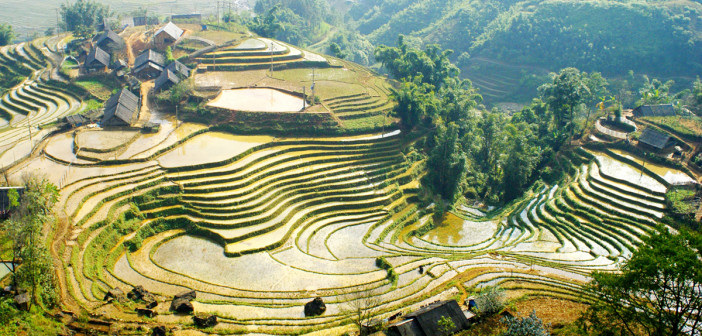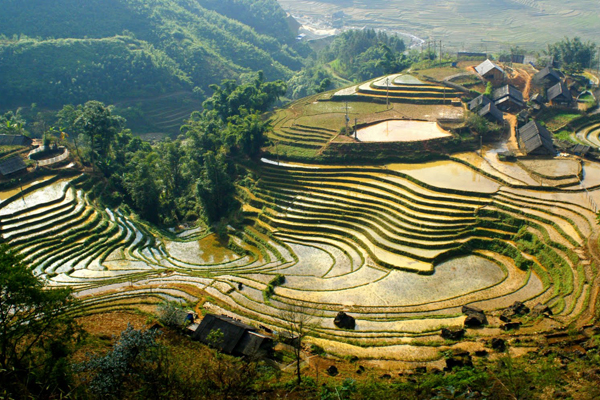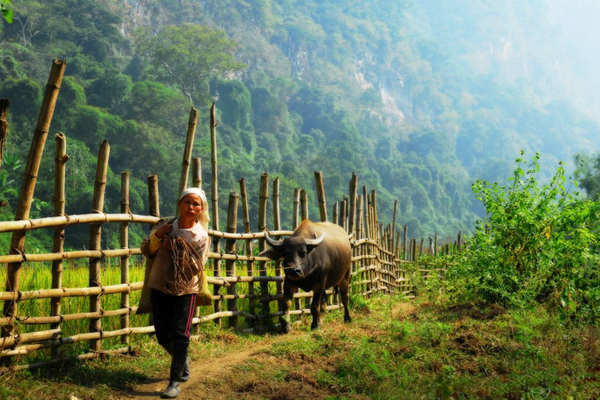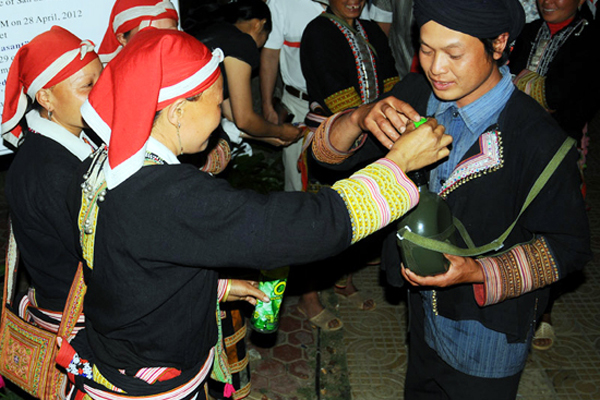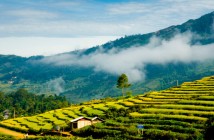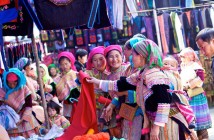Located in the northwest of the country, Sapa is the mountainous district of Lao Cai province. As a modest land, it has many wonders of the natural scenery with topography of hills, green forests, which makes a fascinating scenic picture.
The name “Sapa” literally means “sand” (Sa) and “village” (Pa). Previously, there was just a “sand village” for local people to exchange goods and services.
Sa Pa is located at the height of 1,500 to 1,650 meters on the mountainside of Lo Suay Tong. From the top of this mountain, we can see the southeast of Sapa with the height of 2228 meters.
Sa Pa enjoys temperate and subtropical climate with cool air throughout the year. One day, the town’s weather experiences 4 seasons: the morning is spring, the noon is likened to summer weather with mild sunshine, balmy climate; cool clouds and dew in the afternoon create a feeling of autumn weather and the night is the cold of winter.
The average air temperature of Sapa is 15 °C. In the summer, the town does not suffer from the harsh sun as coastal areas, its temperature is about 13 ° C – 15 ° C at night and 20 ° C – 25 ° C in the daytime. In the winter, the town is covered with cloud and dew with the temperature of below 0 ° C. Average yearly rainfall ranges from 1,800 to 2,200 mm from May to September 8. Apart from the main route from Lao Cai to Sapa, there are other route such as Highway 4D to connect Binh Lu and Lai Chau. Although the vast majority of Sapa’s residents are ethnic minorities such as H’Mong, Red Dao, Tay, Giay, Xa Pho, the town is also a home to Kinh people living on agriculture and tourism services.
Sapa is the kingdom of fruit such as cherry, peach, purple plum, plum blossom, rose, pear, especially immortal flower. It has many natural landscapes attracting domestic and foreign tourists such as Silver Fall, Sapa Rattan Bridge. In addition, SunGate is the highest point to admire Fansipan peak at the height of 3,143m. In Ta Phin cave, stalactites create interesting shapes like the fairies, endless fields and sparkling forests.
Sapa Ancient Stone Field is in Muong Hoa valley with 196 islets in different shapes carved by the ancient inhabitants thousands of years ago. Moreover, visitors have set their foot on Sapa, they surely have to visit Ham Rong Mountain. Ham Rong is home to a lot of colorful flowers planted on each garden, especially many kind of orchid. Ham Rong Mountain is next to the town where any visitor can go there to enjoy panoramic view of town, Muong Hoa valley, Sapa, Ta Phin sunk in smog. Currently, thanks to skillful hand of human, Ham Rong is indeed a fruit-full landscape of Sapa.
Sapa is famous for some unique festivals such as “Roong Pooc” of Giay Ta Van people. Annually, Giay people often hold Roong Pooc festival to pray for abundant crop, favorable weather. “Sai San” festival of Hmong people, “Tet Nhay” of Red Dao people are pictures of unique cultural activities of ethnic minorities that tourists cannot miss.
Sa Pa Market is taken place on Sunday in the town of Sapa. On Saturday evening, everybody gathered together to sing many folk songs of Hmong people, Dao people with the sound of flute, Hmong Pan-pipe; and they called it as “love market”.
Travelling Sapa, it is important to mention special food such as Thang Co, carried-under-arm pigs (Lon cap nach) pigs, stream fish, especially salmon imported from foreign countries. Visitors cannot forget a hot pot served with salmon and green vegetables in freezing winter. As a cold area, Sapa is famous for vegetables like cauliflower, broccoli, beets and chayote.
Referring to delicious dishes of Sapa, there are hand-made pork sausages, fresh mushrooms with pork, black chicken (black skin, black bone), the different kinds of barbecue. However, there is a specialty which is inevitable in Sapa meal – San Lung wine, cat apple wine. A glass of wine at breakfast will bring sophisticated feelings of us about the food here. Therefore, let’s start your journey to discover the romantic area, the town of Sapa where you have not heard before.


